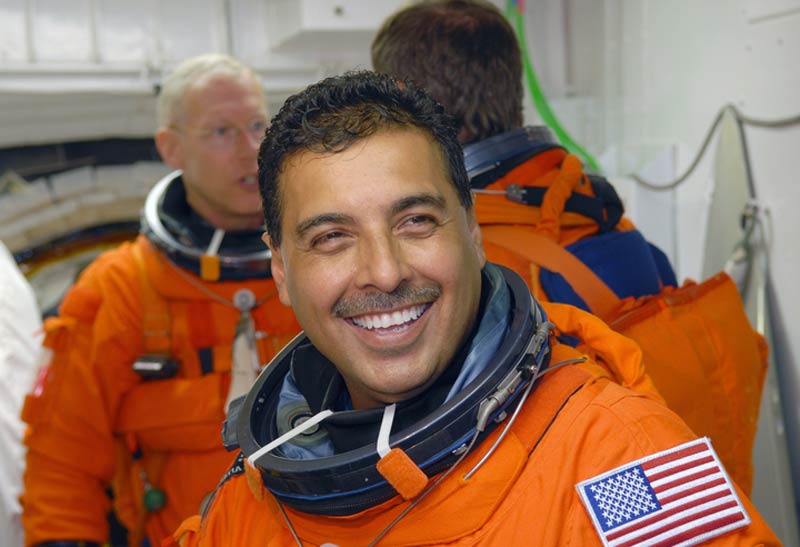Migrant Farmer-Turned-Astronaut Jose Hernandez Leaves NASA

After 10 years with NASA and one shuttle flight, astronaut Jose Hernandez is leaving the space agency for a job in the private sector, the space agency announced today (Jan. 14).
Hernandez, the son of Mexican migrant farm workers, served as a mission specialist on the STS-128 mission of the space shuttle Discovery in 2009. He will accept a position in the aerospace industry, officials said.
"Jose's talent and dedication have contributed greatly to the agency, and he is an inspiration to many," Peggy Whitson, chief of the Astronaut Office at NASA's Johnson Space Center (JSC) in Houston, said in a statement. "We wish him all the best with this new phase of his career."
From the fieldhand to spaceman
Hernandez, 48, was born in California. He spent much of his childhood in the fields of Mexico and California, picking cucumbers, strawberries and other produce with his family. His fieldhand-to-spaceman story has been, he hopes, an inspiration for the Latino community.
Hernandez didn't learn English until he was 12 years old, yet still excelled in school, eventually earning a master's degree in electrical and computer engineering from the University of California, Santa Barbara.
In 2001, Hernandez joined NASA as a materials research engineer at JSC. Three years later, he was selected as an astronaut candidate, and he completed his astronaut training in 2006, NASA officials said.
Breaking space news, the latest updates on rocket launches, skywatching events and more!
Hernandez was a mission specialist on Discovery's STS-128 mission in 2009. During that flight, he oversaw the transfer of more than 18,000 pounds (8,182 kilograms) of supplies and equipment between the shuttle and International Space Station, according to NASA officials.
Hernandez also assisted with robotics operations and served as a flight engineer in the shuttle's cockpit during launch and landing. [Photos: Spectacular Night Launch of Shuttle Discovery]
NASA's astronaut corps slims down
Hernandez's departure comes just two weeks after fellow astronaut Marsha Ivins, a veteran of five shuttle missions, left NASA.
The two departures are part of a larger trend, with NASA's active astronaut corps slimming down substantially over the last five years. This could be the result of astronauts assessing their options as NASA enters a transition period, experts say: The space agency is retiring its shuttle fleet later this year after 30 years of service.
Two more shuttle missions are scheduled. STS-133, Discovery's last flight, will take off no earlier than Feb. 24. It was slated to launch last November, but the discovery of cracks in its external fuel tank pushed the mission back.
STS-134, the last hurrah of the shuttle Endeavour, is scheduled for April. STS-134 is the last shuttle mission officially on the docket, though funding for an additional flight is under discussion in Congress. If approved, that one could take place this summer.
You can follow SPACE.com senior writer Mike Wall on Twitter:@michaeldwall.

Michael Wall is a Senior Space Writer with Space.com and joined the team in 2010. He primarily covers exoplanets, spaceflight and military space, but has been known to dabble in the space art beat. His book about the search for alien life, "Out There," was published on Nov. 13, 2018. Before becoming a science writer, Michael worked as a herpetologist and wildlife biologist. He has a Ph.D. in evolutionary biology from the University of Sydney, Australia, a bachelor's degree from the University of Arizona, and a graduate certificate in science writing from the University of California, Santa Cruz. To find out what his latest project is, you can follow Michael on Twitter.
